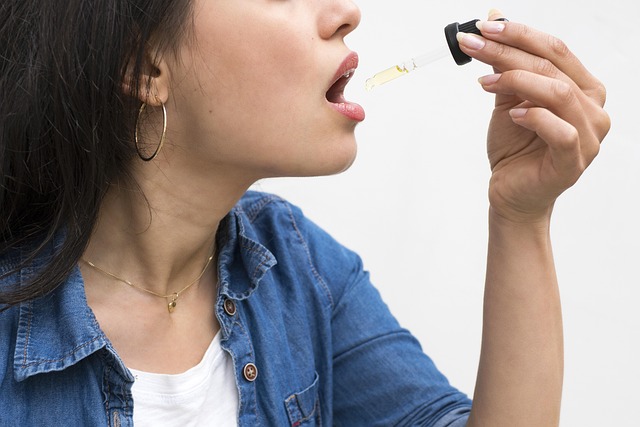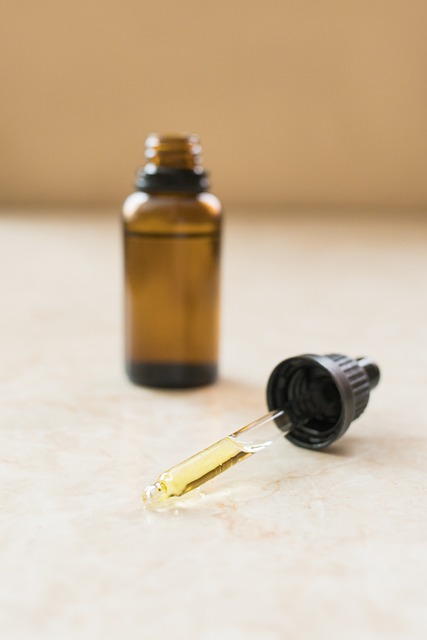Understanding high-potency cannabinoids is crucial for making informed choices in a growing cannabis market. With potencies measured in percentages like THC or CBD content, these substances offer intense effects. Consumers can align their choices with desired outcomes—from pain relief to relaxation—by balancing potency with personal tolerance and preferred consumption methods. A gradual approach is advised for high-potency products to ensure safety and enjoyment. Advancements in extraction methods provide precise dosing and enhanced efficacy, making cannabinoids like THC and CBD promising therapeutic agents for conditions like chronic pain, anxiety, and epilepsy. The market demands transparent labeling and education for High Potency Cannabinoids (HPCs), with regulatory standards harmonizing global guidelines for product quality and safety. Future innovations in delivery methods and potency cater to the increasing demand for effective, safe, and convenient cannabis options.
“Unraveling the complexities of high potency cannabinoids, this comprehensive guide delves into their pivotal role in modern medicine. From understanding the nuances of cannabinoid potency through exploring the science behind labeling and safety considerations, we dissect the impact of high-percentage compounds on consumer preferences and market dynamics. Additionally, we examine global regulatory standards, emerging trends, and the future of cannabinoid delivery. Gain valuable insights into the world of high potency cannabinoids and their transformative potential.”
Understanding Cannabinoid Potency: A Foundation for Informed Choices

Understanding the potency of cannabinoids is essential for making informed choices, especially as the market expands with a plethora of options. High-potency cannabinoids, often sought after by consumers, represent a significant concentration of active compounds in a product. These powerful substances can offer intense effects, but they are not without considerations. Potency levels, typically expressed in percentages, indicate the amount of specific cannabinoids present, such as THC or CBD, in a given product. For instance, a high-potency cannabis strain might boast a 25% THC content, implying that 25 out of every 100 parts of the plant material are composed of this particular cannabinoid.
This knowledge empowers consumers to align their choices with desired effects, whether seeking pain relief, relaxation, or other therapeutic benefits associated with cannabinoids. However, it’s crucial to balance potency with personal tolerance and preferred consumption methods. High-potency products may require a more gradual approach due to their intensity, ensuring an enjoyable and safe experience as one navigates the world of cannabinoids.
The Role of High Potency Cannabinoids in Modern Medicine

In modern medicine, high potency cannabinoids are emerging as powerful tools for a variety of therapeutic applications. These compounds, found in cannabis plants, have shown significant potential in treating conditions that were previously difficult to manage. With advancements in extraction and purification techniques, medical professionals can now access concentrated forms of cannabinoids, offering precise dosing and enhanced efficacy.
High potency cannabinoids, such as tetrahydrocannabinol (THC) and cannabidiol (CBD), have been studied extensively for their anti-inflammatory, analgesic, and neuroprotective properties. For instance, THC has shown promise in alleviating chronic pain and improving appetite in patients with advanced illnesses. CBD, on the other hand, is being explored for its potential in treating epilepsy, anxiety disorders, and even certain forms of cancer. The versatility of high potency cannabinoids makes them a game-changer in personalized medicine, allowing for more effective and targeted treatments tailored to individual patient needs.
Deciphering Labeling: How Percentage Expresses Cannabinoid Concentration

In the world of cannabis, understanding the labeling is crucial, especially when it comes to High Potency Cannabinoids. When a product claims a certain percentage, such as 20% THC, it’s expressing the concentration of tetrahydrocannabinol (THC), one of the primary psychoactive compounds in cannabis. This number tells you how much THC is present out of the total extract or oil in the product. For instance, a 20% THC oil means that for every 100 parts of the product, 20 parts are pure THC.
This method of labeling provides consumers with a clear indication of the potency and potential effects they can expect from the product. It’s essential to decipher these labels as it allows users to make informed decisions based on their desired level of intensity. For example, a higher percentage like 30% or more is typically associated with more potent cannabis products, offering a more intense high but also potentially stronger side effects.
Unlocking the Benefits: Exploring High Potency CBD and THC Compounds

In today’s market, consumers are increasingly seeking high potency cannabinoids like CBD and THC for their potential therapeutic benefits. These powerful compounds offer a wide range of effects that can be tailored to individual needs. For instance, while THC is known for its psychotropic properties, it also possesses anti-inflammatory and analgesic qualities, making it beneficial for managing chronic pain and reducing anxiety. On the other hand, CBD has gained popularity for its calming effects without the intoxicating high associated with THC.
High potency cannabinoids allow for more precise dosing, enabling users to experience targeted relief. Whether it’s alleviating severe insomnia, managing neuropathic pain, or seeking relaxation, these concentrated compounds offer a personalized approach to wellness. With advancements in extraction techniques and research, understanding and accessing high-potency options have become more accessible, empowering individuals to take control of their health and well-being.
Safety Considerations: Navigating the Implications of High-Percentage Products

When it comes to products with high concentrations of high-potency cannabinoids, such as certain cannabis strains or CBD oils, safety becomes a paramount concern. While these potent compounds offer significant potential therapeutic benefits, their concentrated nature also necessitates careful consideration and responsible usage. The implications of consuming or using products with high percentages of these powerful substances can vary widely depending on individual factors like tolerance, overall health, and intended use.
For instance, in the case of CBD oils with high milligram (mg) concentrations, users may experience heightened effects, including increased relaxation, reduced inflammation, and improved sleep quality. However, consuming too much can lead to adverse reactions such as dizziness, fatigue, or gastrointestinal upset. It’s crucial to start with lower dosages and gradually increase based on individual tolerance. Furthermore, consulting with healthcare professionals is essential, especially for those with pre-existing medical conditions or taking other medications, to ensure safe and effective use of high-percentage products.
Consumer Insights: Preferences and Perceptions Shaping the Market

In today’s market, understanding consumer insights is paramount, especially within the niche of high-potency cannabinoids (HPCs). The preferences and perceptions of consumers play a significant role in shaping trends and product demands. Research indicates that there’s a growing interest in products with higher cannabinoid concentrations, reflecting a shift in consumer expectations. This trend is particularly evident among long-time users who seek more potent solutions for specific health concerns.
Perceptions around HPCs are evolving, with many consumers recognizing their potential therapeutic benefits. This has led to an increased demand for transparent labeling and education regarding dosage and safety. Marketers and manufacturers are responding by providing detailed product information, ensuring consumers make informed choices. The market’s dynamic nature, driven by these insights, promises a future where HPC products cater more closely to individual needs and preferences.
Regulatory Perspective: Global Standards and Their Impact on Product Quality

In the global cannabis industry, regulatory standards play a pivotal role in ensuring product quality and safety, particularly for high-potency cannabinoids (HPCs). These standards, often set by international organizations, are designed to harmonize regulations across countries, facilitating trade while maintaining consumer protection. The impact is significant; unified guidelines enable consistent production practices, ensuring that HPC products meet specific potency, purity, and safety criteria worldwide.
This regulatory perspective is crucial for fostering market transparency and consumer trust. By adopting global standards, manufacturers can demonstrate compliance, assuring customers that their products are of high quality and reliable. This, in turn, drives innovation as brands strive to meet or exceed these benchmarks, pushing the industry towards better product development and a more standardized, accessible cannabis marketplace.
Future Trends: Innovation in Cannabinoid Delivery and Concentrations

The future of cannabis consumption looks promising with ongoing innovations in delivery methods and cannabinoid concentrations. One notable trend is the rise of high potency cannabinoids, offering consumers more potent and effective products. This shift towards higher concentrations allows for precise dosing, catering to diverse consumer needs and preferences.
Innovators are exploring various delivery systems, from advanced vaporizers that provide controlled doses to edible forms with precise dosing, ensuring safety and consistency. These developments cater to the growing demand for convenient, effective, and safe cannabis products, pushing the boundaries of traditional consumption methods.
